Often, the owners of the residential building only after the end of its construction want to ...
|
|
The main feature of lime is the absorption of moisture, so this material is enough ... |
Many of us neglect new building materials, and do it in vain! Bright ... |
How to fix joints on wallpaper with your own hands
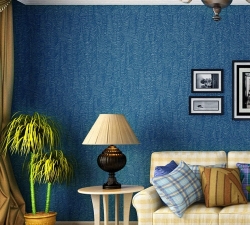
In case of violation of the technology for the installation of wallpaper on the walls, after drying them, the surface loses attractiveness and joints become visible. The method of correcting joints on the wallpaper is determined by the cause of their appearance. We learn about how to fix joints on various types of wallpaper.
Table of contents:
- Wallpaper joints - reasons for the appearance
- How to fix joints on wallpaper
- Instructions on how to glue the joints of vinyl wallpaper
- Non -woven wallpaper - joints, features of elimination
Wallpaper joints - reasons for the appearance
Wallpaper is perhaps the most popular type of wall decoration in residential premises. However, quite often situations happen when, after gluing wallpaper, joints between them become visible. When buying wallpaper, you should already think of the reasons for the occurrence of joints.
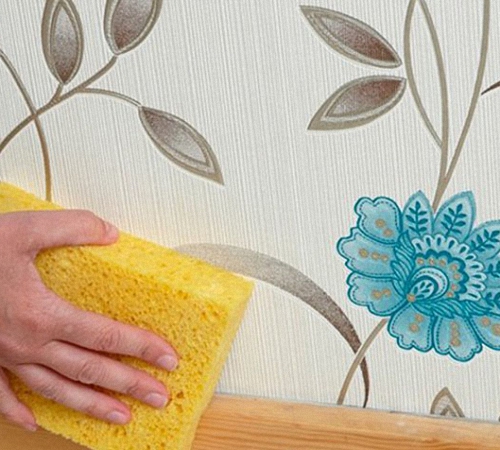
This factor is characteristic primarily for wallpaper with low cost. Although sometimes joints appear when gluing expensive non -woven wallpaper. By choosing wallpaper having vertical stripes or a checkered structure, you will easily hide the joints, even if they are visible. Wallpaper having a glossy surface, vinyl, plain, textured or thin structure - always differ in noticeable joints.
To close up certain joints between the wallpaper, a special sealant is used, however, its use is relevant in case of painting of the wallpaper. It is possible to further stain the sealant itself in the color of the wallpaper.
With improper transportation or storing wallpaper, their joints are also visible. When buying wallpaper, carefully inspect the roll for damage on the sides of the bands. Crossed, damaged ends immediately become visible at the joints. If you have already removed the packaging from the wallpaper, be sure to store them in a standing position.
If the ends of the dark wallpaper are unpainted, then to avoid the appearance of joints, paint them with a dark pencil.
Most often, joints still appear on paper wallpaper. This is due to the fact that the paper is stretched under the influence of glue, and when drying, it decreases in size. Therefore, after applying the glue, immediately glue the wallpaper to the wall without waiting for their swelling. Otherwise, breaks and uneven shrinkage cannot be avoided.

In order to achieve an ideal joint between the wallpaper, you should carefully prepare the wall for their installation. If there are irregularities on the walls, the appearance of joints cannot be avoided. Therefore, before gluing the wallpaper on the wall, take care of their putty, emphasize and apply a primer. Without a primer, the base for the wallpaper will contain a lot of dust, which absorbs glue and will not hold the wallpaper on the surface of the wall. It is preferable to perform the primer of the walls 24 hours before wrapping the wallpaper.
The process of applying wallpaper glue is another reason for the appearance of joints. If you apply glue with excess or in insufficient quantities, then the probability of joints is almost one hundred percent. To set the thick layer of glue, it will take more time than for the thin one, while the paper base will already dry, and the glue under it will be still wet. The glue, in this case, is not able to maintain a decrease in the wallpaper in width. Thus, gaps form between the canvases that worsen the attractiveness of the finished coating.
After applying glue to the wallpaper strip, it is recommended to fold it and roll it with a rubber roller. Thus, all excess glue are evenly distributed on the surface.
After applying the canvas to the wall, using a rubber roller, it is necessary to carefully roll the seams, only in this case, they are securely fixed on the surface.
Some wallpaper options imply the presence of joints, which is almost impossible to hide. These are wallpapers in the form of glossy and vinyl options, as well as silkography. Buying expensive and collection options in no case will save you from the appearance of joints. Therefore, when choosing wallpaper, focus on wide canvases, and try to place the joints between them in places of installation of furniture or other interior items.
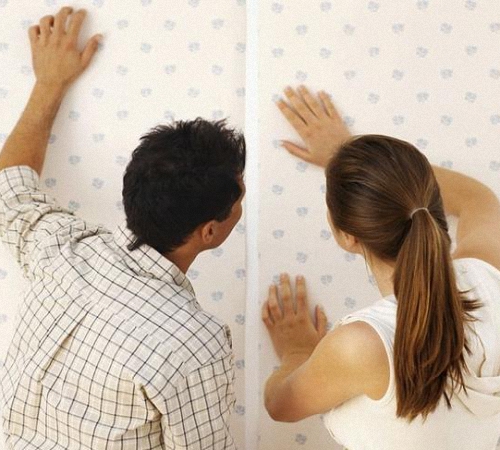
How to fix joints on wallpaper
There are several options for the discrepancy between the joints on the wallpaper. We offer to familiarize themselves with them:
- The divergence of joints in such a way that the lumen of the wall becomes visible between them;
- the adhesive composition on the front side at the junction;
- twisting and lifting the edges of the joint strip;
- the difference in color between the joints of the wallpaper;
- Uneven or uneven coloring of joints.
To adjust these problems, various methods are used that differ in labor intensity and material costs.
To correct the wallpaper that have dispersed on the junction, first of all, the cause of their appearance should be studied. The width of paper wallpaper, after applying glue to them, increases by about half a centimeter. The field of application on the wall and drying of the wallpaper, they begin to return their volume. Thus, the distinction of the joint is created.
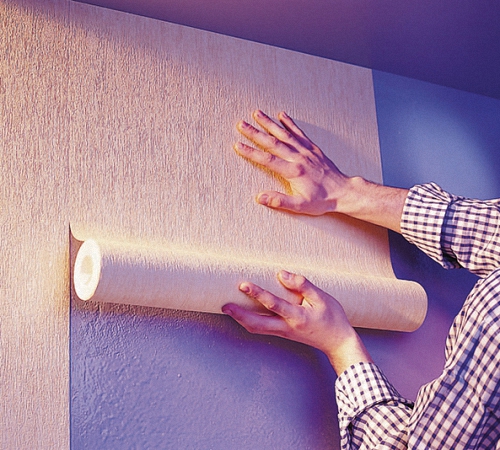
Working with wallpaper on paper, non -woven and vinyl basis, it should be taken into account that these materials are prone to swelling. In order to avoid the appearance of joints, follow the technological recommendations for gluing wallpaper on the wall:
- The material should not be excessively soaked when it hits the wall, after applying the glue, you do not need to expect a lot of time to install wallpaper on the wall;
- Do not allow an excess of glue on the surface of the wallpaper, often there is a narrowing of roller materials in the process of drying, so the wall does not have time to dry until the wallpaper dries and joints and discrepancies appear;
- To fix the edges of the canvas, use a special glue that will reliably hold the canvas on the surface of the wall, additionally fix the edge of the canvas using a rubber roller.
To get rid of joints between the dispersed stripes, several methods are used. The most on the one hand is simple, and on the other, it is financially costly painting wallpaper.
Less costly method Using grout for tiles to the color of wallpaper. To do this, a certain color of the tint is added to it, and the grout is applied to the joints. It is possible to use a conventional marker or pencil with which the junction of the joint is painted.
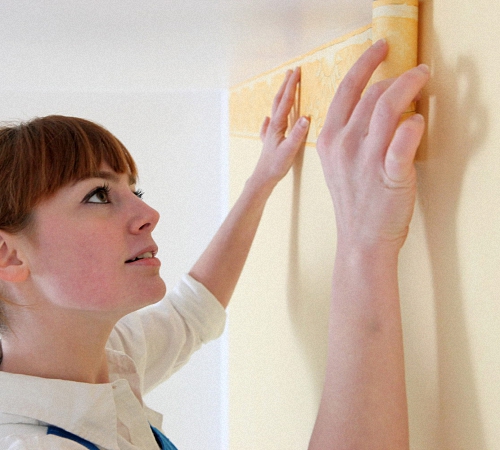
The option of using the upper part of the wallpaper connected to PVA glue is possible. That is, if there is a baby on the wallpaper, then it must be carefully removed from the pruning, then the baby is connected to the glue and applied to the surface. This mixture is used to put the joints.
The installation of molding or special panels will not only get rid of joints, but also improve the attractiveness of the appearance of the wallpaper. A simpler option is to install paper borders on the seams between the wallpaper. The option of re -raising wallpaper in places of discrepancy between the joint is possible. To do this, we soak the butt parts of the sheet using warm water. Next, apply glue to them and try to stretch and connect to each other, in the presence of small errors, this method will help to correctly dock the wallpaper among themselves.
Another problem arising with the joints of the wallpaper is the presence of glue on their surface. This occurs due to a large amount of adhesive to the wall or wallpaper. Despite the transparency of the adhesive, it is nevertheless noticeable in daylight. In order to avoid such situations, it is recommended to first of all study the instructions for the wallpaper glue and apply it according to it.
To remove glue from the surface of the wallpaper, be sure to prepare a clean, preferably white rag. Until the glue is dry, you can get rid of it with its help.
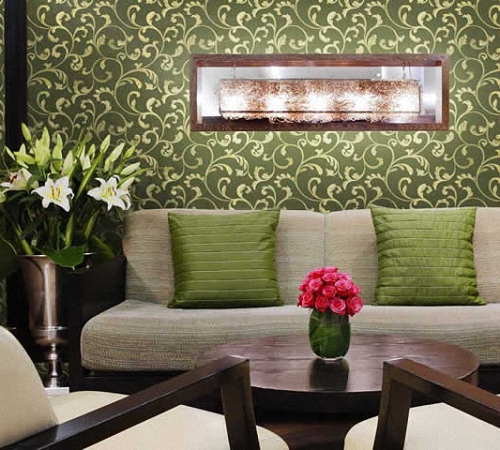
Sometimes a problem arises in the form of twisting the edges of the wallpaper in the joints. Most often, wallpaper begins to exfoliate along with wall decoration. The reason for this is the use of low -quality materials for decoration. To remove this defect, it is enough to use the wallpaper glue, with which the twisted edges are again fixed on the surface. In order to tightly fix the wallpaper on the wall, use a rubber roller.
Playing wallpaper joints is a rather complicated process, for which the technology of wallpaper gluing technology should be strictly adhere to.
In the presence of uneven color or cutting of wallpaper, the aesthetic attractiveness of the coating is also lost. This is due to the mismatch of the wallpaper rolls by color or tone. Try to stick the second canvas the top with your feet in relation to the first. This method of reverse installation of wallpaper will get rid of this problem.
To hide the uneven cut of wallpaper or uneven color, it is necessary to resort to painting joints. For these purposes, special products are used in the form of felt -tip pens and pencils. Try to choose the color of the pencil as close as possible to the wallpaper.
Different tapes, edges, borders, etc. will help decoratively decorating the joints of the wallpaper. Keep in mind that each type of wallpaper is distinguished by a manifestation of an individual reaction to a particular version of the wallpaper. For example, if you apply glue to paper wallpaper, then they are very quickly stretched, but this will not happen with non -woven. Before starting work, carefully study the instructions for the wallpaper, their features and installation technology. Only in this case, it will be possible to get rid of problems with how to glue the joints of the wallpaper.
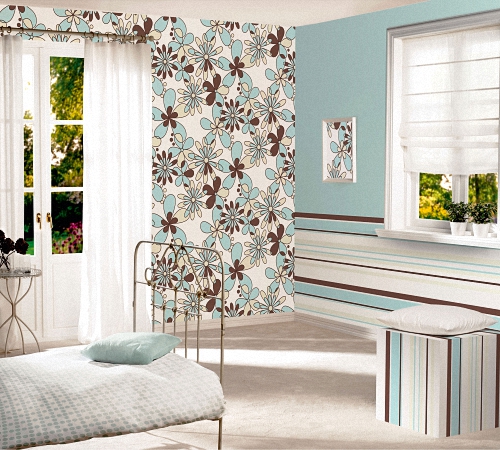
Instructions on how to glue the joints of vinyl wallpaper
Special difficulties in gluing vinyl wallpaper arise with their connection at the junction and in the corners. Particular attentiveness should be shown when processing the joints of the wallpaper in the corners.
With proper preparation of walls, and especially in the presence of even corners, there are no problems with the appearance of uneven joints in these places. The main rule for obtaining high -quality angles is the through cutting of the joint. The canvases on both sides are installed on the wall with a small overlap of three centimeters. Next, you should cut this place and the connection of two canvases is obtained. The junction of the joint is coated with glue and smoothed. In this case, it is still impossible to avoid a small shift by the picture. Although sometimes it turns out to be perfectly reduced.
In order to avoid the appearance of joints in the process of gluing vinyl wallpaper on the wall, it is necessary to install canvases with overlap. If vinyl wallpapers have a non -woven base, an overlap of 20 mm is enough, for a paper base this value doubles. Next, it is enough to cut the joint with a knife in level and remove excess.
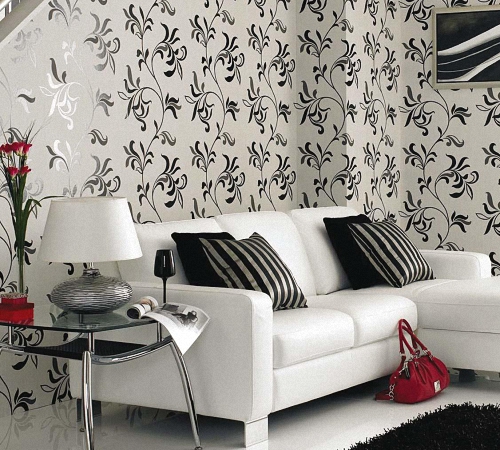
After completing work on wallpaper gluing, check the walls for the absence of defects in the form of air bubbles, the discrepancy between joints, not glued areas. Correct them if necessary. In places of joints, it is recommended to install furniture and other items that hide them.
Vinyl wallpapers have a non -woven or paper base. Depending on this, glue is selected for their fixation on the wall. The use of glue for non -woven wallpaper will fix the final wallpaper with a non -woven base. This option is applied to the wall. Wallpaper on a paper basis should be covered with glue before installation. In any case, before starting work, check out the instructions for applying glue.
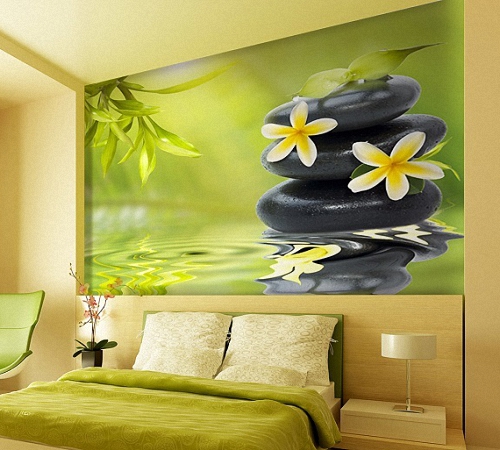
Non -woven wallpaper - joints, features of elimination
The popularity of the widespread use of non-woven wallpaper is explained primarily by their fire safety, good heat and sound insulation characteristics and greater mechanical strength.
The process of gluing non -woven wallpaper is the same as gluing wallpaper on a paper basis. To fulfill it, it is enough to perform the following actions:
- prepare glue;
- Cut the wallpaper into strips according to the height of the room;
- apply glue to the wall;
- install the strip on the wall and glue it;
- get rid of excess glue;
- cut out unnecessary parts of the wallpaper;
- Glue the next strip.
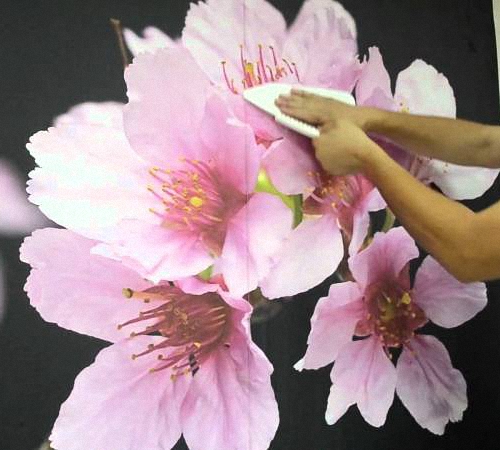
Before starting work, it is necessary to purchase a special glue for non -woven wallpaper and dilute it according to the instructions. The glue of the joints of the non -woven wallpaper is not particularly difficult. Using the level, draw a line on the wall, which will be a place to install the first strip. At the same time, follow not evenness. Install the strip on the wall previously smeared with glue. In the same way, draw the second line and glue the strip. There are no special problems with the divergence of joints in non -woven wallpaper, since they are not able to stretch out since paper ones. The conventional level will help to make the joints of the wallpaper with the help of which it is possible to draw a line of the strip location.
Pay special attention to the corners, the wallpaper sheet should go into a corner by 10-15 mm. The wall is coated with glue and the sheet is applied to it. Use a roller to level the sheet. Poking the next canvas is carried out with overlap. When small folds are formed, they are cut to remove air and leveled.
If it is necessary to stick wallpaper at the outer corners, a 25 mm overlap should be made. If the angle is perfectly even, then it is enough to dock the stripes among themselves. Otherwise, you should still resort to the use of overlap. Using a stationery knife, cut the junction and get rid of excess.

bad article, no information
bad article, no information how to correct sensibly
class
class
maybe at least once
maybe you should try at least once yourself? Before writing such a muin
The article is about anything.
The article is about anything.
s
s
Ravings of a madman
Ravings of a madman